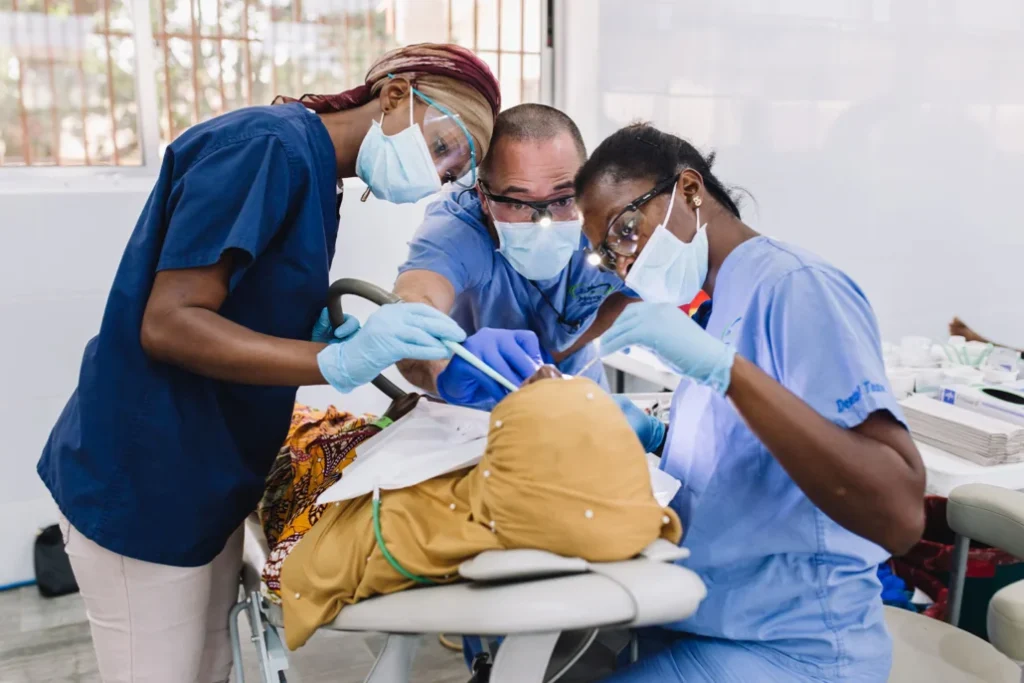The number of dentists diagnosed with anxiety has more than tripled since 2003, according to the American Dental Association’s (ADA) newly released 2021 Dentist Health and Well-Being Survey Report. The findings have prompted a major shift in how the ADA and its Council on Dental Practice approach physical and mental health support for dental professionals.
“Supporting both the physical and mental health needs of dentists, across their lifespan, continues to be an important area of focus for the ADA,” said Dr. Jim Hoddick, chair of the ADA Council on Dental Practice. “COVID-19 has created unique stressors. I see people every day who are stressed out to the max and overworked.”
Pandemic Burnout and Workforce Strain
Dr. Sherry Gwin, chair of the Council on Dental Practice’s Health, Wellness, and Aging Subcommittee, emphasized that the lingering effects of the pandemic have been deeply felt throughout the dental field.
“The long-term impact of the COVID-19 pandemic has affected everyone, including dentists and their team members,” she said. “The ADA should be a safe spot.”
She noted that many dental professionals are reluctant to seek help, a cultural hurdle that she says must change.
“We’re so used to paddling our own canoes. But we need to band together to remove the stigma of seeking support.”
The pandemic’s impact on workforce dynamics has also intensified existing staffing shortages, placing additional burdens on dentists and their remaining teams. The rise in patient demand—stemming from postponed care during lockdowns—has only exacerbated the pressure on an already stretched workforce.

Key Findings From the 2021 ADA Wellness Survey
The 2021 survey, distributed to 20,000 randomly selected ADA member and nonmember dentists, paints a detailed picture of a profession grappling with health challenges both physical and psychological. Among the notable statistics:
-
Tripled Anxiety Diagnoses: Anxiety among dentists has more than tripled since 2003.
-
Chronic Pain and Discomfort: 84% of dentists reported pain or discomfort while working, especially in the neck, lower back, shoulders, and upper back. About 14% said the pain interferes with their ability to work.
-
High Job Satisfaction: Despite challenges, 86% of dentists expressed satisfaction with their practice, and 95% felt respected by colleagues. However, younger dentists reported lower levels of perceived respect.
-
Hearing Issues: 35% of dentists reported hearing problems, which were over twice as common among those aged 40 and older. Yet, 61% had never consulted an audiologist.
-
Common Health Conditions: Back problems (27%), elevated cholesterol (16%), anxiety (16%), depression (13%), and chronic pain (8%) were among the most reported health issues.
-
Limited Awareness of Support: Only 46% of respondents were aware of dentist well-being programs provided by their state dental associations.
ADA’s Plan of Action: Mental Health in Focus
In response to the data, the ADA has launched several initiatives to support dentists’ mental health, following the 2021 House of Delegates’ passage of Resolution 95H-2021 — Prioritizing the Mental Health of Dentists. The resolution instructs the ADA to evaluate existing mental health resources, improve wellness programs, and reduce the stigma associated with seeking help.
Planned actions include:
-
Partnerships With Mental Health Providers: The ADA is exploring collaborations with third-party mental health professionals to offer support to member dentists.
-
Wellness Conference Enhancements: The ADA is assessing its existing wellness conference for improvements, with the next event scheduled for 2023.
-
Suicide Prevention Toolkit: A comprehensive toolkit is being developed, offering resources for suicide prevention, crisis response, and guidance on managing practice disruptions due to mental health emergencies or death.
-
Campaign Development: ADA aims to craft an effective, profession-wide mental health and wellness campaign informed by best practices.
-
Policy Protections: The organization is examining ways to protect dentists from punitive actions by state dental boards or third-party credentialing entities in relation to mental health challenges.
The ADA has also pledged to report back to the 2022 House of Delegates with a fully developed plan.
Resources Already Available
While many initiatives are still in progress, the ADA emphasized that support resources are currently available. Dr. Hoddick encouraged dental professionals to take advantage of existing programs related to mental health, opioid use, and workplace ergonomics.
“The ADA has numerous resources to support the health and wellness of dentists,” he said. “Take advantage of this information and share it with your teams and colleagues.”
One upcoming resource is the ADA Accelerator Series webinar featuring Dr. Bethany Valachi, a dental ergonomics expert, scheduled for March 2 at 7 p.m. CST. The session will focus on physical strain mitigation, a pressing issue given the high percentage of dentists reporting musculoskeletal pain.
Breaking the Silence, Building Support
The 2021 survey marked the third time the ADA has assessed the well-being of dentists, following previous reports in 2003 and 2015. With mental health now taking center stage, ADA leaders say the dental community must embrace a culture of openness and collective support.
As Dr. Gwin put it, “We need to normalize conversations about mental health in dentistry. The ADA must be a stronghold where professionals feel safe to seek help.”
By expanding resources, removing stigma, and elevating wellness as a professional priority, the ADA hopes to safeguard the future of dental practice—one healthy, supported provider at a time.






